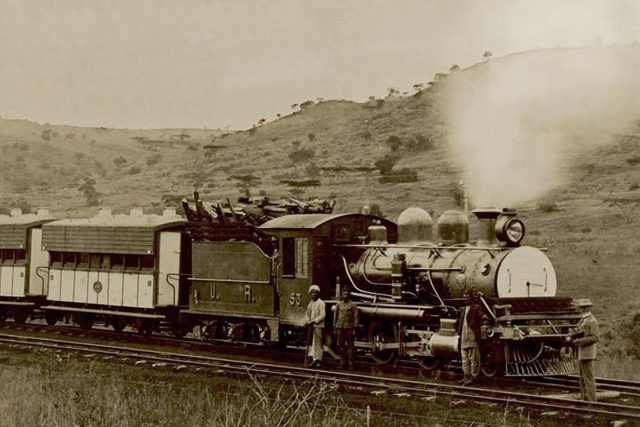I can still hear the echo of the hammer on steel, the hiss of steam engines cutting through the tropical silence, the ghosts of a railway that changed East Africa forever. The Uganda Railway was not just a transport project. It was Britain’s iron artery, laid across East Africa to pump wealth out of the land and feed the veins of the empire.
Construction began in 1896 at the port of Mombasa and crept steadily inland. At first, the task belonged to the Imperial British East Africa Company, a curious blend of commerce and colonial power. The Company believed it could build a railway with the same methods it used for trade routes: cheaply, quickly, and with profit as the goal. The East African landscape proved otherwise. The escarpments, the wildlife, and the communities that resisted foreign intrusion overwhelmed the Company. Eventually, the British government stepped in, taking direct control and pouring money, soldiers, and engineers into a project that would cost lives, shatter communities, and redefine the region’s destiny.
The railway provided Britain with immense benefits. Timber from Kenya’s forests, once locked in the interior, could now move swiftly down the tracks to Mombasa before sailing away to British factories. The fertile land of the Rift Valley, later branded as the “White Highlands,” was suddenly accessible to European settlers. British aristocrats could ride the train into Nairobi, step off, and claim thousands of acres of fertile soil to farm and occupy. The railway also gave Britain military muscle, making it easier to move troops into the interior and crush resistance wherever it flared up.
The Uganda Railway was more than steel and tracks. It became a colonial weapon presented as progress. For Africans, it meant forced labor, land dispossession, and the tightening grip of foreign rulers. For the British, it became a steel bridge to profit, prestige, and permanence in East Africa. Every tie and every track reinforced the structure of a colonial state.
Even today, traveling on modern lines means moving along the echoes of that first imperial gamble. The Uganda Railway delivered wood, land, and power to Britain, while demanding sweat, blood, and land from Africa. It was not built to move people and goods alone. It was built to secure control.

























